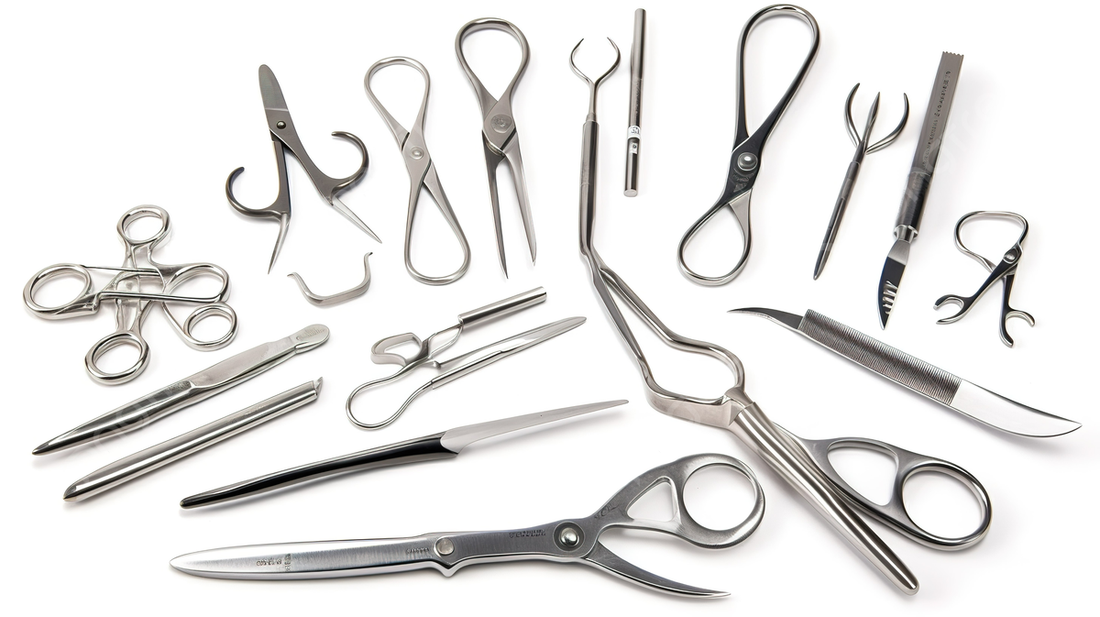
Emerging Technologies Revolutionizing Surgical Instruments Market
Share

Introduction
The landscape of surgical instruments is undergoing a groundbreaking transformation, driven by innovative technologies that are redefining how surgeries are performed. These advancements enhance precision, efficiency, and safety, enabling surgeons to push the boundaries of medical intervention.
From robotic-assisted systems to nanotechnology, augmented reality (AR), and artificial intelligence (AI), the integration of cutting-edge technologies is setting a new standard in surgical practices. For investors, these developments offer a wealth of opportunities in a market poised for exponential growth.
Let’s explore these transformative technologies and their potential impact on the future of surgery.
1. Robotic-Assisted Surgical Systems: Precision Redefined
Robotic surgery, epitomized by systems like the da Vinci Surgical System, has set a benchmark in minimally invasive procedures. These systems utilize robotic arms controlled by surgeons, delivering unmatched precision and dexterity.
Why It Matters:
· Enhanced Accuracy: Robotic systems reduce invasiveness, resulting in quicker patient recovery.
· Durable Instruments: Surgical tools designed for robotic systems are made from resilient materials, ensuring reliability under demanding conditions.
Investor Takeaway: With a growing preference for minimally invasive procedures, robotic-assisted systems represent a lucrative segment in the surgical instrument market.
2. Augmented Reality (AR) and Virtual Reality (VR): The Future of Surgical Visualization
AR and VR technologies are revolutionizing both surgical procedures and training. AR enables real-time visualization of patient anatomy, aiding precision, while VR offers immersive simulations for skill enhancement.
Why It Matters:
· Reduced Errors: Surgeons can practice complex procedures in virtual environments.
· Improved Navigation: AR overlays provide real-time insights during surgeries.
Investor Takeaway: The adoption of AR and VR in surgery underscores a shift toward precision-driven practices, creating new avenues for investment in hardware and software solutions.
3. Smart Surgical Instruments: Real-Time Feedback for Better Decisions
Smart instruments integrate sensors, data analysis, and connectivity, offering real-time feedback during surgeries. For instance, Novo Surgical's smart instruments track usage, sterilization status, and location through cloud-based data.
Why It Matters:
· Enhanced Safety: Real-time data minimizes errors and improves decision-making.
· Operational Efficiency: Connectivity streamlines inventory and usage tracking.
Investor Takeaway: The integration of IoT and smart technologies into surgical instruments is a growing trend with significant investment potential.
4. Nanotechnology: A New Frontier
Nanotechnology introduces revolutionary possibilities in surgical instruments, including targeted drug delivery, antimicrobial coatings, and enhanced wound healing.
Why It Matters:
· Infection Prevention: Antimicrobial surfaces reduce surgical site infections.
· Better Outcomes: Targeted interventions enhance patient recovery.
Investor Takeaway: Nanotechnology’s application in healthcare promises high returns, with its ability to address critical surgical challenges.
5. Energy-Based Surgical Instruments: Precision Meets Efficiency
Energy-based devices, like Olympus's THUNDERBEAT, combine ultrasonic and bipolar energy for cutting, coagulating, and sealing tissue.
Why It Matters:
· Time-Saving: Faster procedures reduce operating room time.
· Patient Benefits: Minimally invasive energy-based tools promote quicker recovery.
Investor Takeaway: As hospitals seek efficient surgical solutions, energy-based instruments remain a compelling investment sector.
6. Artificial Intelligence: Smarter Surgical Decisions
AI is revolutionizing surgical planning and decision-making. Solutions like Ortoma’s AI-powered platform create 3D anatomical models for personalized surgical plans.
Why It Matters:
· Enhanced Precision: AI-driven insights reduce surgery time and improve outcomes.
· Scalable Impact: Personalized planning can be adopted across various specialties.
Investor Takeaway: AI in surgical instruments represents a high-growth segment, with its ability to enhance precision and reduce costs.
7. 3D Printing and Biocompatible Materials
Additive manufacturing allows for the creation of customized surgical instruments tailored to individual patients. Biocompatible materials further enhance integration and reduce adverse reactions.
Why It Matters:
· Customization: Instruments can address unique anatomical variations.
· Improved Biocompatibility: Materials like bioactive ceramics promote healing.
Investor Takeaway: The convergence of 3D printing and biocompatible materials is set to disrupt traditional manufacturing processes, presenting new opportunities for innovation.
Conclusion: Investing in the Future of Surgical Instruments
The evolution of surgical instruments through emerging technologies like robotics, AI, AR, nanotechnology, and 3D printing is paving the way for a transformative era in surgery. These advancements promise improved patient outcomes, reduced errors, and operational efficiency, creating a fertile ground for investment.
For investors, the surgical instrument market offers a dynamic intersection of healthcare and technology. By backing companies at the forefront of these innovations, stakeholders can drive not only financial returns but also advancements that reshape the future of medicine.